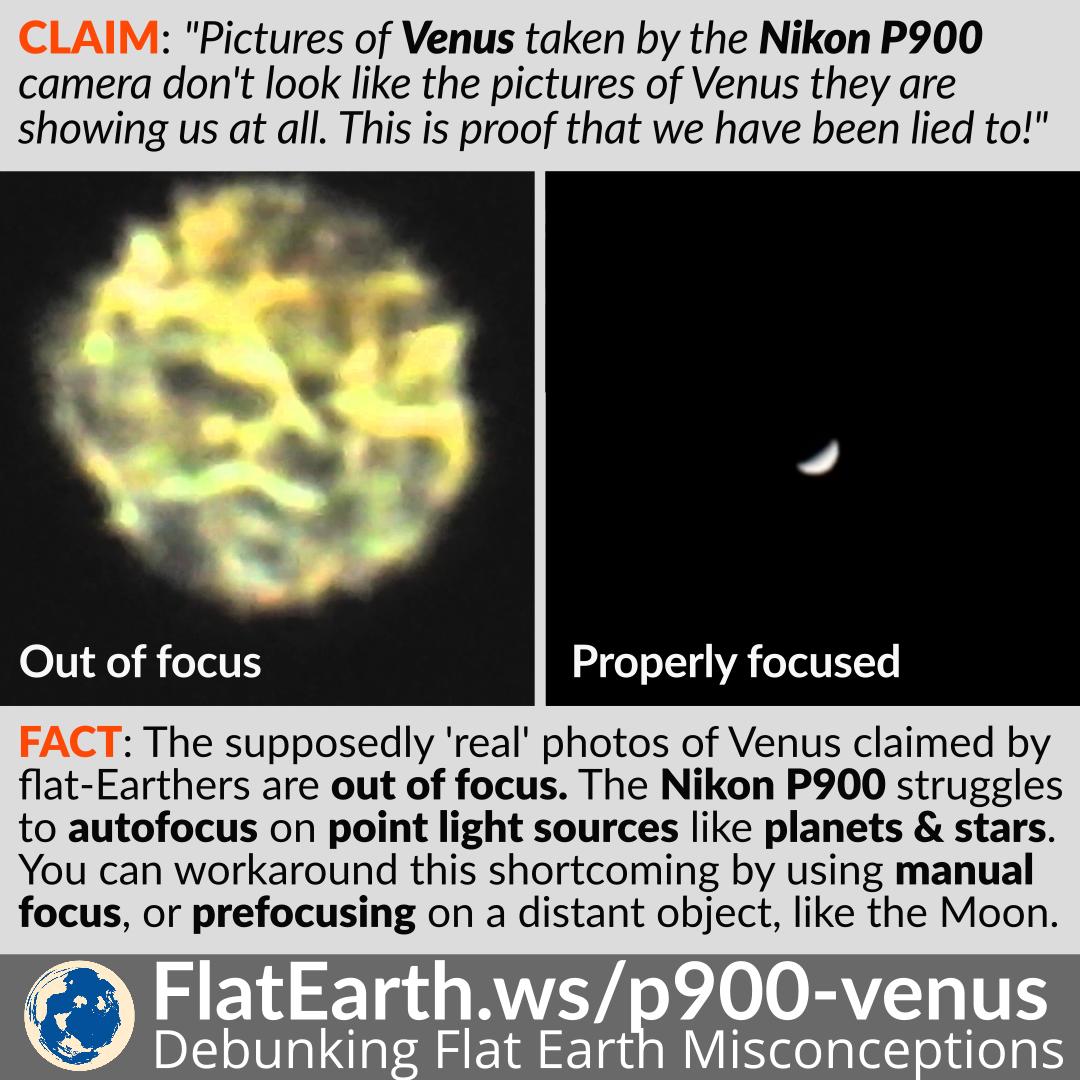The Nikon Coolpix P900 camera is a very popular camera among flat-Earthers because there’s no other compact camera ever made that has such enormous zoom range. It is a unique and a very useful tool in this state of affair.
Someday, some flat-Earthers decided to bring their trusty P900s out and used them to take some pictures of Venus. To their delight, the resulting pictures don’t look like Venus we all used to know. They were too excited that they thought they have discovered an original ‘proof’ of global deception. “This is an irrefutable ‘proof’ that they have been lying to us!” so they say.
But, maybe there’s a simpler, more plausible explanation…
The supposedly ‘real’ pictures of Venus taken by these flat-Earthers are actually out of focus. That’s why their pictures are so different from the actual Venus we know. They obviously used autofocus, and the P900 struggled to autofocus on tiny objects on pitch black background, like Venus. Photography is not exactly flat-Earthers’ strong point, and it shows.
If Venus is in crescent phase, then why is it round when out of focus? The round figure is what we call ‘bokeh’. It is round because the shape of the aperture of the lens is also round. Some lenses have an aperture that is not perfectly round (especially when stopped down), and it will be apparent on the out of focus part of the image.
In Venus videos taken by the P900, why are there rippling effects on out of focus image of Venus? The rippling effects are caused by random atmospheric distortions. We can also observe this effect when zooming in on the surface of the moon. Obviously it is not caused by the Moon. Earth’s atmosphere is dynamic, and randomly distort light.
But can we take a focused picture of Venus using the P900? Absolutely. We can workaround this shortcoming by switching off autofocus and use manual focus.
Another way to do this is to prefocus on a very distant object. If the Moon is visible, we can use the Moon to focus on it, then aim for Venus, all while keeping the same focus distance.
If we do it right, we can take proper image of Venus that is not much different from the image of Venus we are familiar with.
Reference
- The P900 Rippling Orb Effect & Taking Photos of Venus – Metabunk
- How to focus and expose when videoing Venus with a Nikon P900 – Movie Vertigo – YouTube


